Research
Our group focuses on the biofabrication of scaffolds for studying direct cell behavior. The initial projects were centered around creating matrices with patterned surfaces to promote the differentiation of neural cells. The group then transitioned to printing technologies to develop neural conduits by combining synthetic fibers and natural hydrogels to fabricate 3D models for studying neural outgrowth. During MSCA-IF at IDIBELL, the PI utilized iPSC technology to fabricate vascular grafts using 3D bioprinting technology. Currently, our group is particularly interested in developing novel bioinks and solutions for 3D bioprinting. We modify bioinks to influence specific cellular behaviors, working with cell lines, primary cells, and, more recently, employing iPSCs and their derivatives.
As our group consists of interdisciplinary members and collaborates with many esteemed scientific groups in Europe, the UK, and the US, we continuously strive to advance various biofabrication technologies and adapt existing protocols for differentiating iPSCs. We are working on both extrusion-based and light-based bioprinting techniques. From 2025, our laboratory is equipped with the first volumetric 3D bioprinter in Poland and Central and Eastern Europe, enabling advanced research in biofabrication and tissue engineering.
Currently, the projects PulsBioInk and First Team Feng are ongoing.
These projects are being carried out at the Center for Advanced Technologies at Adam Mickiewicz University in the newly established
Jagoda Lab.
- First Team FENG (FNP)
- PulsBioInk (NCN)
- Opus LAP (NCN)
- STEMCEDIF (MSCA-IF)
- GrooveNeuroTube (Norway Grants, NCBR)
- Preludium (NCN)
- Extrusion-based bioprinting – a layer-by-layer deposition of cell-laden hydrogels for building 3D constructs.
- Light-based bioprinting – such as Digital Light Processing (DLP), for precise, high-resolution structuring of soft materials.
- Volumetric 3D bioprinting – an emerging technology that enables the fabrication of complex 3D shapes within seconds using tomographic light projection.
- Established cell lines
- Primary cells, isolated in collaboration with our CAT AMU animal facility
- Stem cells: neural stem cells (NSCs), mesenchymal stem cells (MSCs), and induced pluripotent stem cells (iPSCs)
- Confocal microscopy
- Flow cytometry
- Molecular biology techniques
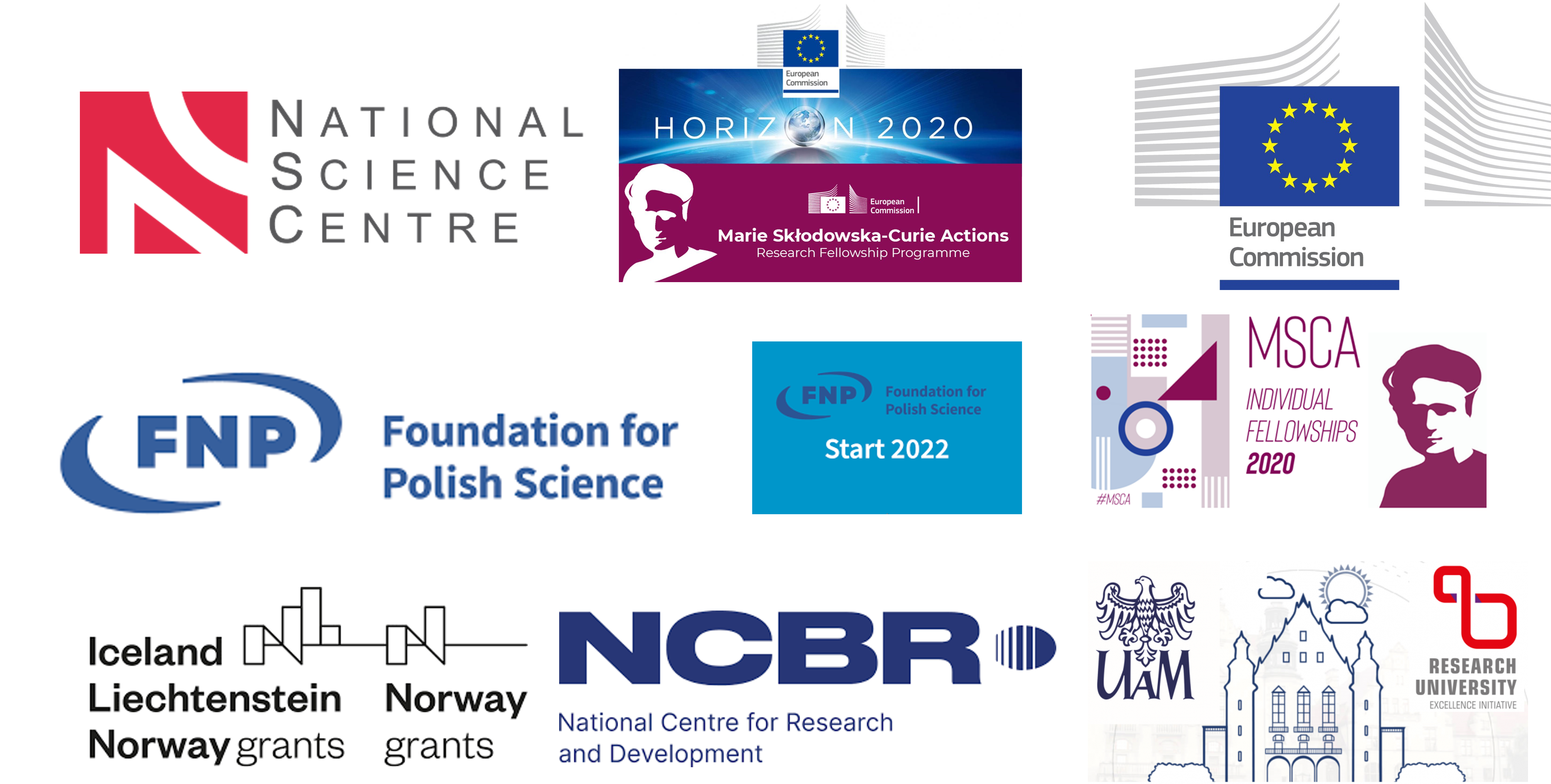
Current research lines in the group
Our Research
At the core of our work is the design and engineering of biomaterials and living systems that replicate the complexity and functionality of native tissues. We focus on developing smart, cell-responsive biomaterials, pioneering biofabrication strategies, and using stem cell technologies to create advanced, functional tissue models for regenerative medicine, drug testing, and basic biological research.

At the core of our work is the design and engineering of biomaterials and living systems that replicate the complexity and functionality of native tissues. We focus on developing smart, cell-responsive biomaterials, pioneering biofabrication strategies, and using stem cell technologies to create advanced, functional tissue models for regenerative medicine, drug testing, and basic biological research.
Biomaterials Design & Characterization
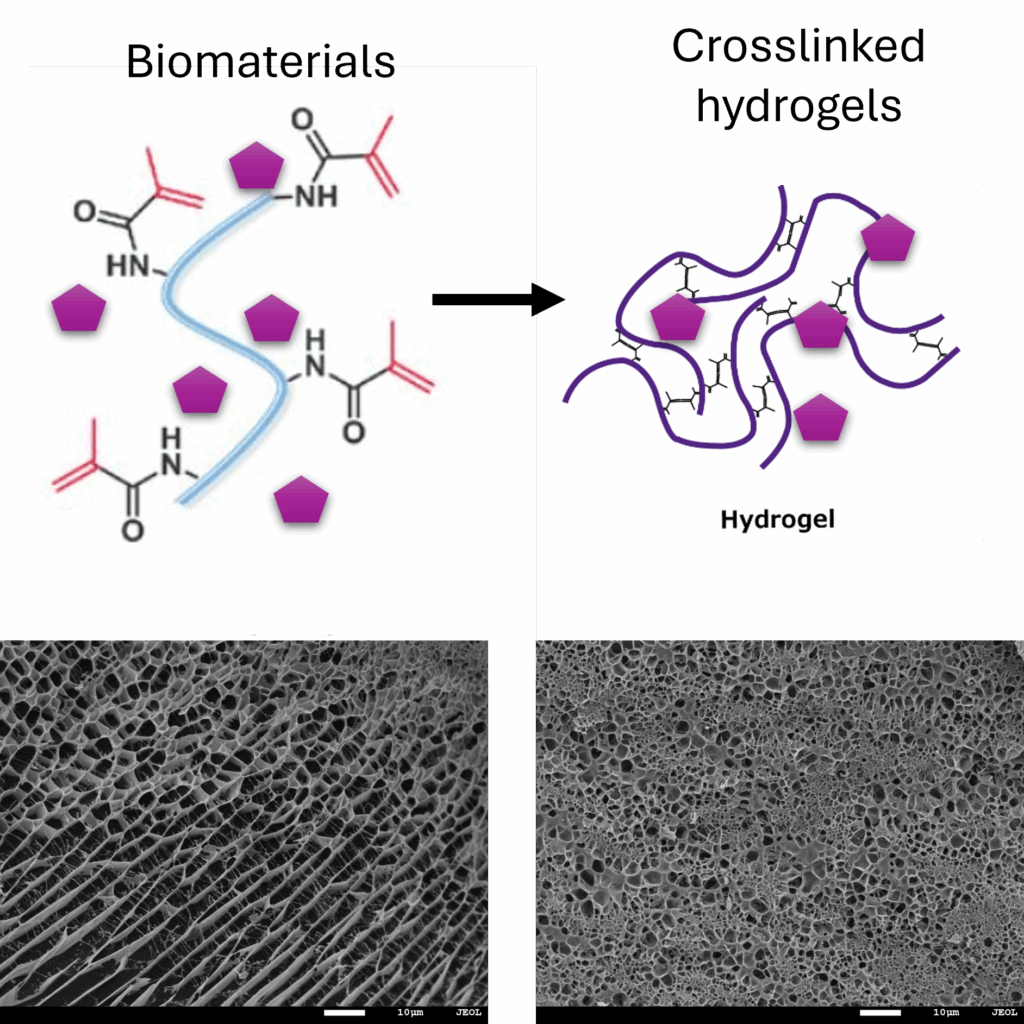
We specialize in the design, synthesis, and characterization of biomaterials tailored for biomedical applications. Using advanced techniques such as NMR, FTIR spectroscopy, TGA and rheology, we fine-tune the properties of our materials to meet the specific requirements of the target tissue. Our team develops and optimizes custom bioink formulations, ensuring printability, bioactivity, and compatibility with various bioprinting platforms.
3D Bioprinting
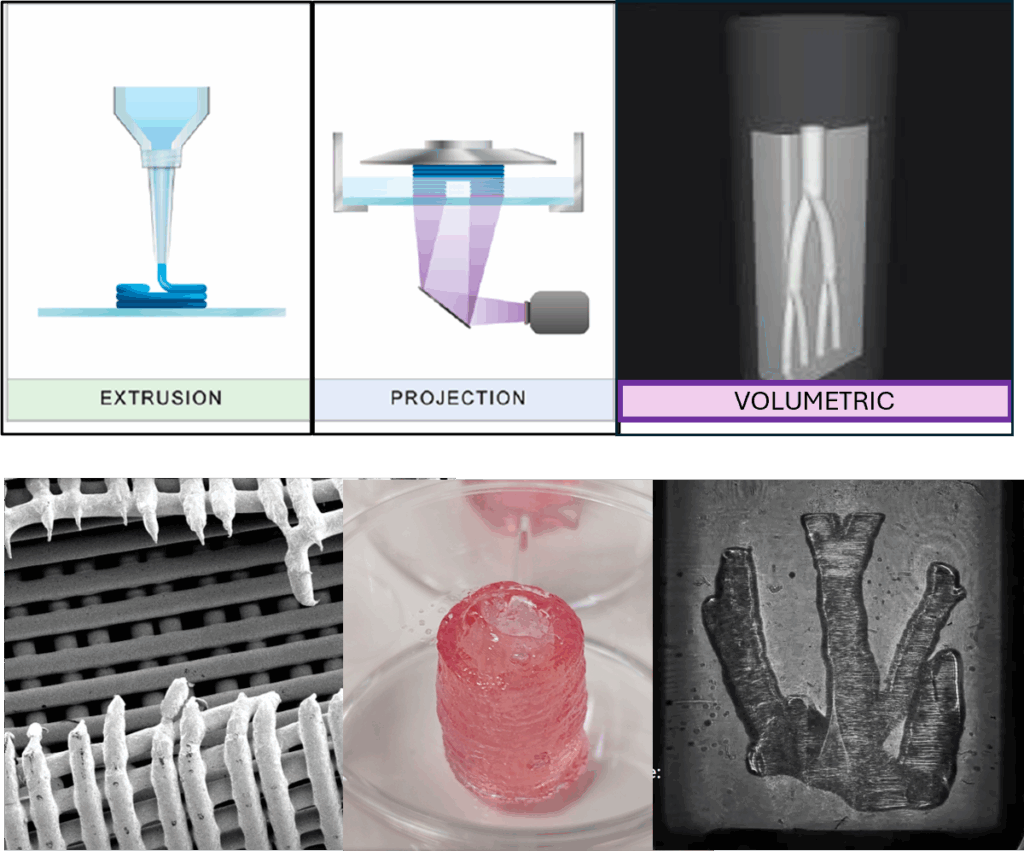
Our lab is actively working with several cutting-edge 3D bioprinting technologies, including:
Through these technologies, we aim to replicate the intricate architecture and functionality of biological tissues.
Perfusion Systems & Long-Term Culture
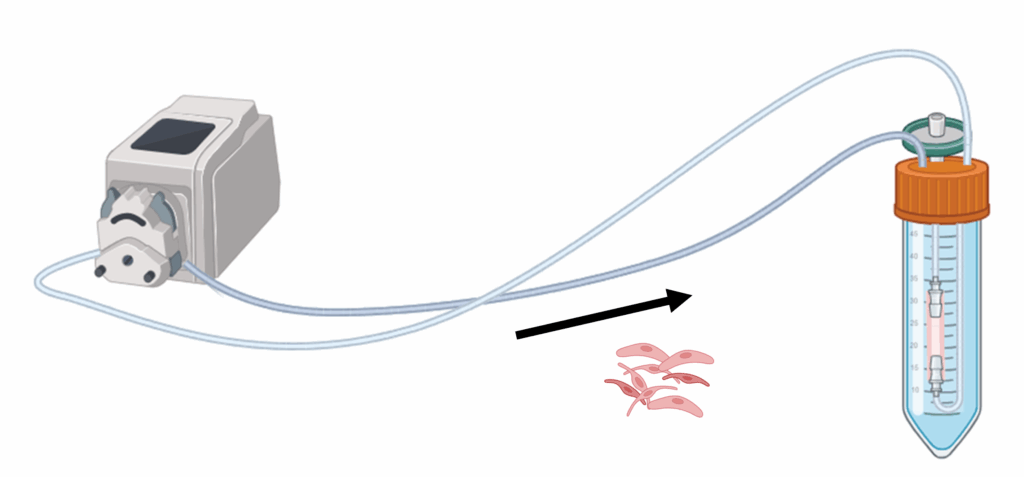
We design and implement perfusion systems to support the long-term culture of 3D bioprinted constructs. These systems enable dynamic flow of nutrients and waste removal, closely mimicking physiological conditions and improving tissue maturation.
Cell Culture
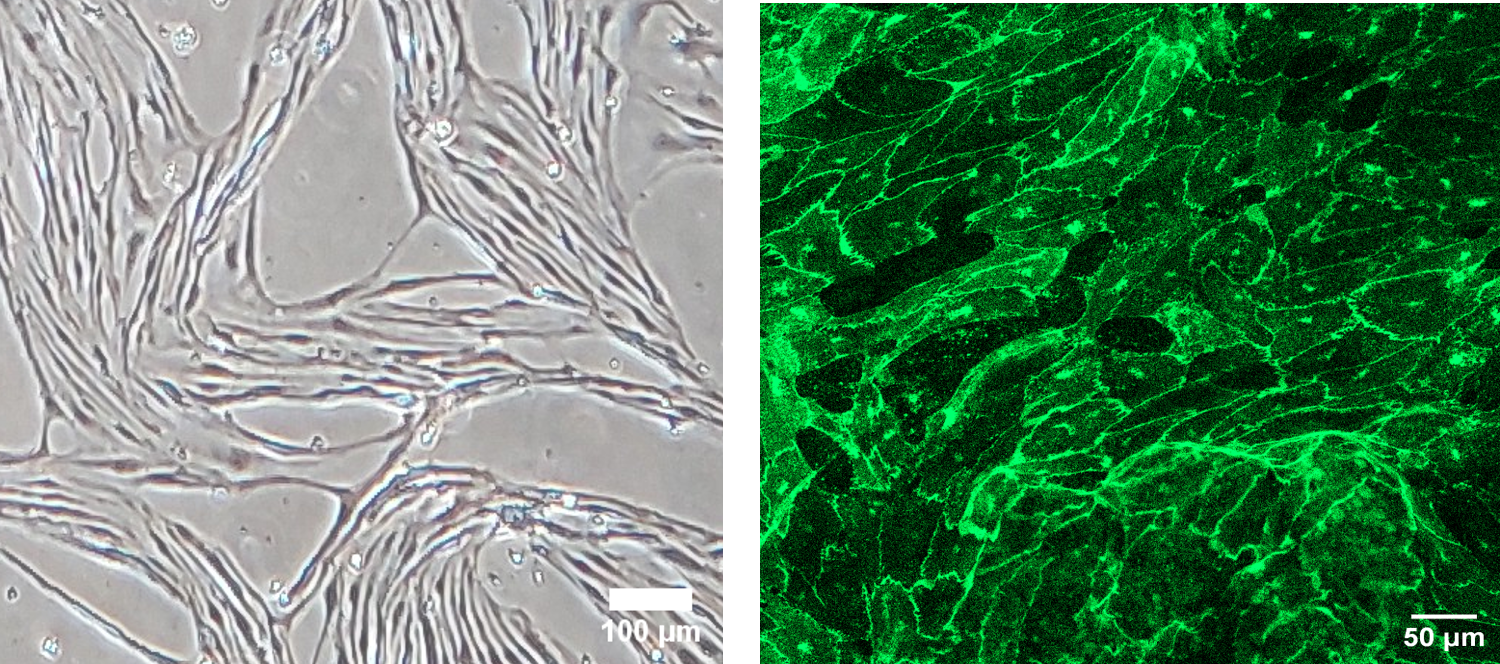
Our research involves a wide range of cell types, including:
We focus on differentiation into target cell types such as cardiomyocytes, cardiac fibroblasts, endothelial cells, and neurons, to recreate tissue-specific functionality in our constructs.
Biological Characterization
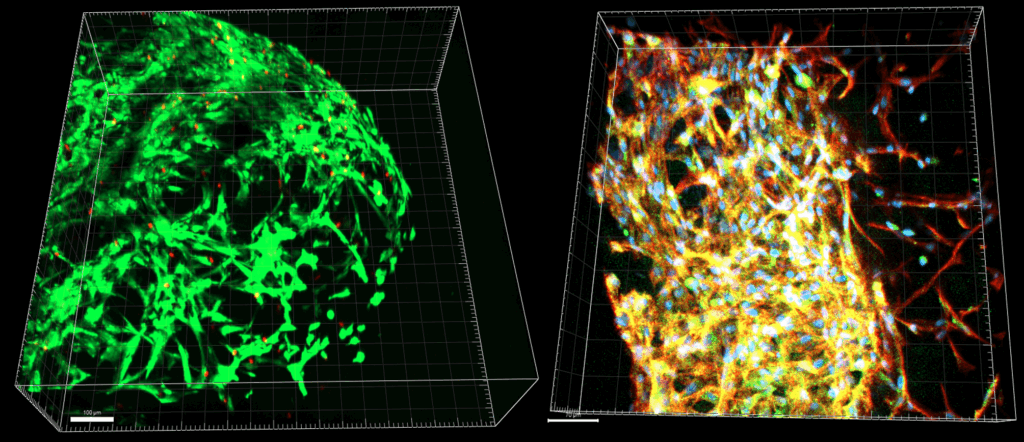
We assess the biological performance of our cell-laden constructs using a combination of:
This allows us to monitor cell viability, differentiation, and tissue-specific marker expression with high precision.
Our interdisciplinary team combines expertise in chemistry, biomaterials science, cell biology, and bioengineering to push the boundaries of tissue fabrication. Whether it’s developing novel bioinks, printing functional tissues, or engineering perfusable systems for long-term culture, we aim to bring engineered tissues closer to clinical and industrial application.
